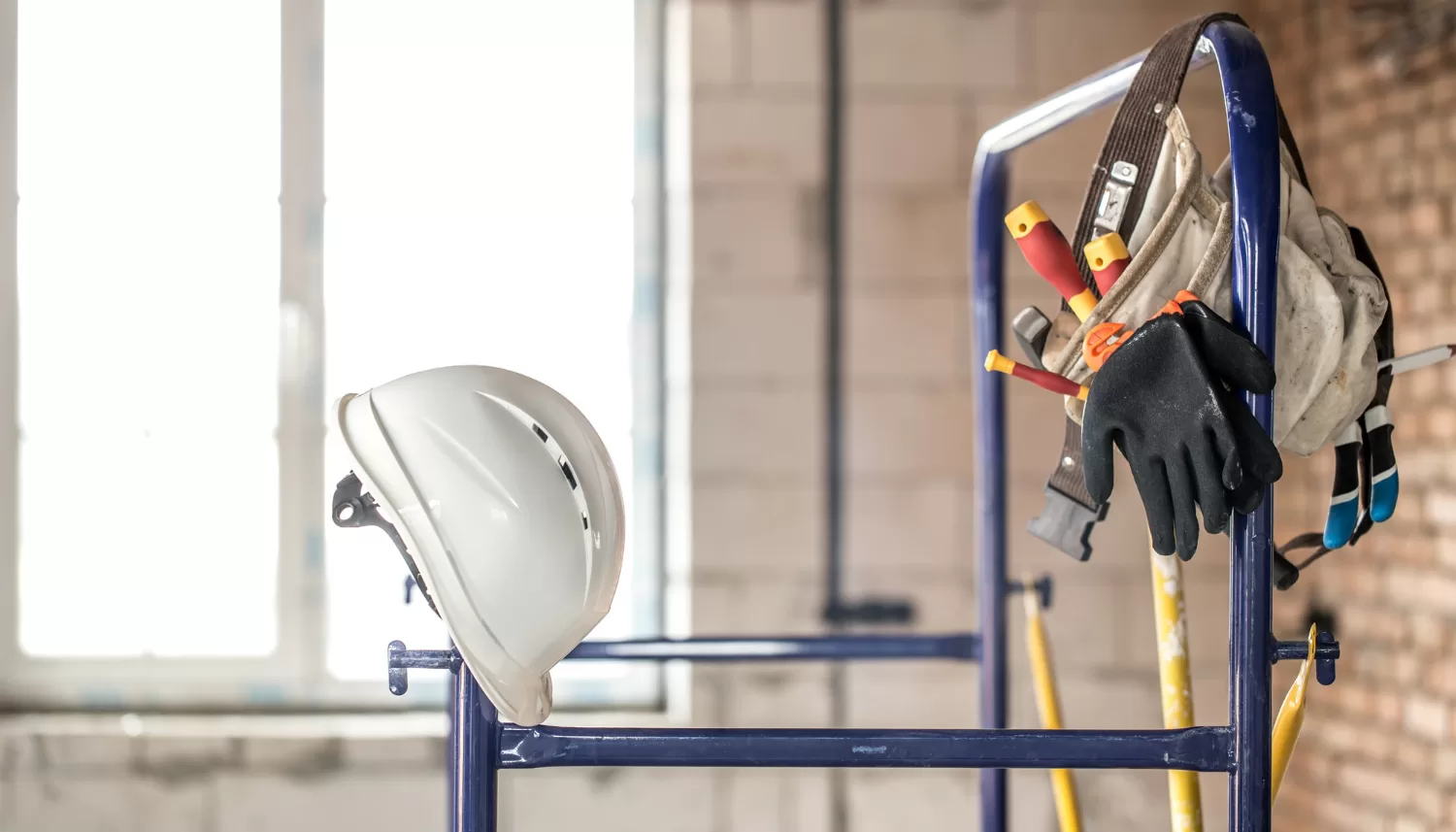The struggle between property owners and damp is an ongoing one, especially in the case of rising damp. With rising damp, groundwater enters through the pores of a wall’s brickwork or stone, travelling upwards and spreading by way of capillary action. Initially, this occurrence manifests itself cosmetically. You will become aware that your home suffers from rising damp through tidemarks, damp patches, and peeling paint. Seemingly harmless, these effects can escalate to serious concerns, such as black mould and rotting wood. Such effects can endanger the health and safety of a property’s residents by triggering breathing issues and compromising the building’s structural integrity.
After noticing the initial signs of rising damp, it’s important to employ an expert and seek treatment as soon as possible. Treating rising damp may require undertaking other actions. Given that rising damp is caused by groundwater penetrating the brick or stone of your home, removing excess soil to a minimum of 150mm below the current damp proof course may be necessary. Rising damp might cause flooring to rot, which will require the damaged parts to be removed and replaced. Rising dampness treatment could also see the removal of damaged plasterwork, skirting boards, and radiators.
Primarily caused by groundwater, rising damp could also be the result of a damaged damp proof course or the lack of a damp proof course. It cannot be stressed enough that before undergoing any treatment, it’s important to hire an expert to survey the property, diagnose the issue, and provide the best wall damping treatment options.
1. Damp Proof Course Injection
When searching for a rising dampness treatment for your home, the most prevalent treatment is a damp proof course injection, also known as a chemical damp proof course injection. This wall damping treatment is often employed when the building’s current damp proof course is damaged, and no longer prevents rising damp from occurring.
In order to install a damp proof course injection, all wall coverings and furnishings must be removed. This includes paint, plaster, wallpaper and skirting boards, in order to expose the building’s stonework. Once exposed, holes are drilled into the walls at an estimated height of 150mm from the ground. The chemical injection, either in the form of a liquid or cream, is injected into these holes. The chemical will dry into the stonework and create a barrier that repels water, thus treating rising damp. Once dried, wall coverings and furnishings can be reapplied to the repaired walls.
This rising dampness treatment is popular for several reasons. In comparison to other treatments, it’s found to be minimally invasive, cost-effective and takes less time to install. However, these factors are not reasons to avoid employing an expert to install a damp proof injection into your home’s walls. It’s advisable to hire a professional given that there’s room for serious error. Mistakes such as drilling into damaged walls, injecting the chemical into the wrong place, or misdiagnosing the issue with the current damp proof course can result in serious and costly damage to a property.
2. Electro-Osmosis Damp Proofing Course
There are several reasons why chemical treatments such as the damp proof course injection may not be suitable for treating rising damp. As a property owner, you may opt for a chemical-free treatment, or a damp survey may determine that chemicals are not the best solution. In that case, another treatment to consider is the electro-osmosis damp proofing course.
The electro-osmosis damp proofing course also requires holes to be drilled into the walls of a building. Instead of chemicals though, titanium and/or copper wires are installed in these holes. The wiring will run an electrical current through the walls. The electrical current is positively charged, so will reverse the direction of the rising damp. This method serves as an effective wall damping treatment as it forces the water back into the ground. In order to keep the walls damp-free, this current must be run continuously.
The electro-osmosis damp proofing course is a chemical-free option that’s also safe because the electrical current running through the property is very small. The wiring can be covered following installation so you won’t need to leave your walls exposed. The treatment is useful for walls that consist of rubble, in addition to solid brick and stone. However, the system can’t be used during damp and valuation surveys as it will lead to a misdiagnosis for rising damp. It’s best to keep this in mind when buying, renting, or selling a property with an electro-osmosis damp proofing course in use.
3. Damp Proof Membrane
Rising damp can be the result of either damage or deterioration of the existing damp proof course, or the building not being constructed with a damp proof course. Therefore, another rising dampness treatment option is to install a damp proof membrane onto or within the property’s walls. Often, this treatment sees the bottom layer of your home’s masonry being removed. The membrane, made from waterproof polyethylene, high-density polyethylene (HDPE) or other materials, is inserted and affixed to that cleared space. The specifications of the membrane are government-regulated and required to meet a minimum 1200-gauge thickness. Sometimes, the membrane may be spread under a slab of concrete. Installation must be done to ensure that the membrane overlaps and allows for a cavity for absorbed water to evaporate. Following this, the brick or stone of the building is re-laid.
Although effective on their own, damp proof membranes are occasionally used in conjunction with damp proof course injections to provide a wall damping treatment that’s guaranteed to last decades. Membranes not only provide protection against rising damp; when applied vertically, they can act as a barrier between your home’s building materials and penetrating damp.
Although chemical and electricity-free, the primary disadvantage of damp proof membranes is in their installation. This treatment requires dismantling stonework, which can be time consuming, labour intensive, expensive and invasive. Furthermore, if the property has already suffered serious damage from rising damp, cutting into the building may destabilise it further. Therefore, you will need to weigh up several factors before choosing this treatment.
4. Mortar Injection Damp Proof Course
The mortar injection damp proof course is very similar to the damp proof course injection. Both rising dampness treatments require exposing stonework, drilling, and injecting the treatment into the building’s walls. However, unlike a cream or liquid chemical injection, this treatment injects mortar into the stonework.
A mortar injection damp proof course serves two purposes. Much like a chemical injection, the injected mortar has chemicals that repel water and create a barrier against rising damp. At the same time, it fills gaps in the masonry, which are a source of rising damp, and binds the material together.
Therefore, if your property has suffered some damage or was constructed with material that naturally forms gaps, a mortar injection damp proof course can provide additional binding, while also serving as a rising dampness treatment.
Choosing the Right Treatment for Your Property
Different factors will determine which wall damping treatment is best for treating rising damp on your property. At CS Damp Proofing, we find that the damp proof course injection and damp proof membrane work well alone and together. The damp proof course injection is both economic and efficient. However, the damp proof membrane is a non-chemical option that uses material that is impermeable to water. This membrane is also multipurpose – it can be used to treat different types of damp, is suitable for walls as well as floors, protects masonry from rot and mould, and can also double as insulation.
Mortar injection damp proof course offers a 2-for-1 service if your home suffers from rising damp and requires extra binding in its stonework. However, if you’re interested in a non-chemical, minimally invasive option, electro-osmosis damp proofing course makes use of a safe amount of electricity. And these are only the four main options available for rising dampness treatment, other options are available depending on your needs.
Rising damp can pose a myriad of risks to your property if left untreated, especially over a long period of time. It can cause respiratory problems, cosmetic damage, structural damage and property devaluation, all of which are expensive to fix and can be avoided by using the right rising dampness treatment as early as possible. Don’t wait for minor aesthetic problems to become major structural problems. Explore all the solutions for damp proofing and act on it as soon as signs of rising damp present themselves.
The best course of action is always to hire a professional to conduct a damp survey to determine your home’s specific issues and which treatment will serve you best.
Contact CS Damp Proofing
At CS Damp Proofing, our team of specialists are equipped with thirty years of experience and are more than capable of finding the right damp treatment for your property. If you’re unsure whether your property is being affected by rising damp, our experts can conduct a damp survey and guide you through treatment.
Contact CS Damp Proofing today at 01765 452510 or fill in our contact form.

